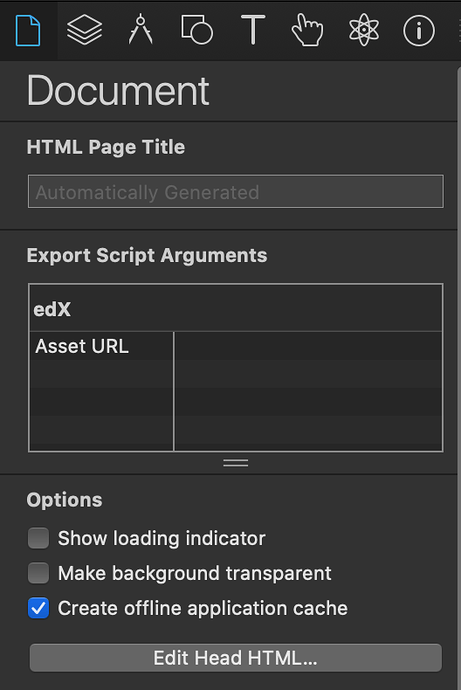I did a bit more reading on the state of the art here. Seems like not much has changed since that original post, but the available information is a bit easier to navigate.
Here's a great intro to what it takes to convert HTML to SCORM: How to Convert HTML to a SCORM Package on Your Own
There's a testing suite for testing SCORMy content you create. I recommend signing up here: SCORM Cloud: Test, Play and Distribute eLearning
(Having trouble recovering my account, but I'll give this a shot when that's working).
The time consuming part is enumerating each resource used in the file. Not sure why the system needs to know about every image, seems a bit controlling. Here's what that looks like:
Since Hype generates a manifest file with all resources, we can use that to help us out:
Then add: <file href=" + your resources folder name to the start of each line. Visual Studio Code (and many text editors) let you select a column and quickly change lines all at once. In VScode you press shift + option and then click and drag:
So after you export your document from Hype, you would just change the URL listed here: imsmanifest.xml · GitHub to match that of your Hype document.
This is the starting point that seems like a good minimal package:
ContentPackagingSingleSCO_SCORM12 (1).zip (348.2 KB)
Don't delete these files, but everything else is fair game. Just make sure you list them in the resources section!
imscp_rootv1p1p2.xsd
ims_xml.xsd
adlcp_rootv1p2.xsd
imsmd_rootv1p2p1.xsd
The examples here have more detail about how the reporting process works: The Best SCORM Examples: Sample SCORM Packages but the above example should get you able to embed Hype content within Moodle in a more Scorm(y) way.
These type of interactive modules (for example 'You need to view this and take a quiz before you can do that' are typically built with packages like Adobe Captivate ($399). But they are built on an open standard that has all the elegance of a learning platform standard developed by the military. So they aren't really friendly for hand coding.
'Education Enterprise' is a special place, especially since it is built around an open source tool.
 Thanks everyone!
Thanks everyone!

 thanks!!
thanks!!